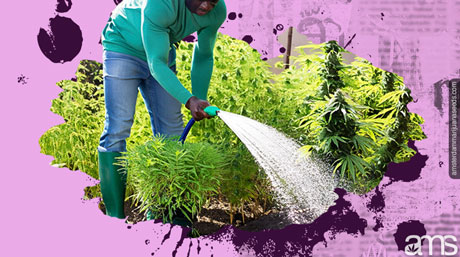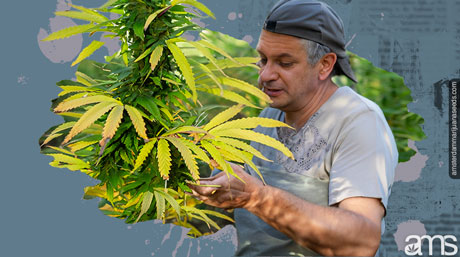Welcome, fellow growers, to the world of cannabis gardening! Whether you are a seasoned cultivator or a novice enthusiast, mastering the art of watering and irrigation is crucial for successful outdoor cannabis cultivation. As a passionate and experienced grower, I understand the specific needs of cannabis plants, including marijuana seeds and the process of growing marijuana. I’m here to share valuable insights and best practices with you. In this comprehensive guide, we will delve into the key aspects of watering and irrigation, exploring techniques, schedules, and factors that influence the growth of your prized cannabis plants. So, let’s embark on this green journey together and learn how to optimize your cannabis garden with care and precision.
Before we dive into watering and irrigation practices, it’s essential to address the foundation of cannabis cultivation: the seeds. Whether you buy marijuana seeds online or obtain them from a reliable source, selecting high-quality seeds is paramount to your success.
Choosing the right cannabis seeds goes beyond the strains and genetics. Consider factors like growth characteristics, THC/CBD content, and seed viability. Opt for reputable seed banks with positive reviews from fellow growers to ensure the best possible start for your garden.
Once you have acquired the right cannabis seeds, it’s time to initiate the cannabis growing process. Understanding the process of growing marijuana and the plant’s specific needs during its various growth stages is vital.
Creating an ideal growing environment with ample sunlight, proper ventilation, and nutrient-rich soil is essential for growing marijuana. Ensure a healthy pH level (between 6.0 to 7.0) to optimize nutrient absorption for your cannabis plants.
As you commence the cannabis growing journey, the first question that arises is, “What are the best practices for Cannabis watering?” The key to successful watering lies in striking a balance – avoiding overwatering or underwatering your plants.
Watering cannabis plants, especially when growing marijuana, effectively involves considering various factors such as climate, temperature, humidity, and soil composition. For instance, in hot and dry climates, cannabis plants may require more frequent watering than in cooler regions.
Always water your cannabis plants, at the base, avoiding direct contact with leaves or flowers. Wet foliage can lead to the development of mold and fungal diseases. Use room-temperature water to prevent shocking the roots and hindering nutrient uptake. An eco-friendly and cost-effective approach is to collect rainwater in barrels for your garden.
During the vegetative growth phase of growing marijuana, cannabis plants typically require more water. As they transition to the flowering stage, reduce watering slightly to mimic natural conditions.

Garden irrigation techniques play a crucial role in ensuring a consistent and efficient water supply to your cannabis plants. Drip irrigation and soaker hoses are excellent choices for outdoor gardens, including those for growing marijuana, as they deliver water directly to the root zone while minimizing wastage.
Consider employing a timer-based irrigation system to automate the watering process. This not only saves time and effort but also ensures that your cannabis plants, receive water consistently, even when you are away.
Implementing mulch around your marijuana plants, can help retain soil moisture, reduce weed growth, and maintain a more stable root temperature.
What are the specific needs of Cannabis plants, in terms of Watering practices? Cannabis plants have varying water requirements throughout their life cycle, influenced by factors such as age, size, and environmental conditions.
Young cannabis seedlings, are delicate and sensitive to excessive moisture. Water them sparingly, allowing the soil to dry out slightly between waterings.
As cannabis plants, mature, they demand more water due to their increased size and foliage. Observe your plants closely and adjust the watering frequency accordingly.
During the flowering phase, marijuana plants, require additional care, as this is when bud development occurs. Monitor soil moisture levels closely, ensuring they receive enough water without waterlogging. Observe your marijuana plants, for signs of stress, such as drooping leaves or yellowing. Adjust your watering schedule if you notice any abnormalities, as these could be indicators of either overwatering or underwatering.

Successful cannabis cultivation, involves a holistic approach that considers all aspects of plant care, with irrigation playing a central role. Incorporate watering practices into your overall cultivation strategy.
Keep a journal to track your watering schedule, growth progress, and any changes you make to your garden. This record-keeping will help you fine-tune your approach over time.
Understand that different cannabis strains, may have varying water requirements. Some strains are more drought-resistant, while others thrive in humid conditions. Tailor your watering approach accordingly.
Learn from your experiences and mistakes. As an enthusiastic grower, don’t be afraid to experiment with different watering techniques and observe how your cannabis plants, respond.

Congratulations, dear growers! You have now become well-versed in the best practices for watering and irrigation in outdoor cannabis gardens, including those for growing marijuana. By understanding the specific needs of cannabis plants, and adopting appropriate garden irrigation techniques, you are well on your way to a bountiful harvest of healthy, vibrant buds. Remember, cannabis cultivation, is a journey of continuous learning and improvement, so keep exploring, experimenting, and honing your skills as an expert cultivator.
Now, armed with this knowledge, go forth and create the cannabis garden of your dreams, including those for growing marijuana, and let the beauty and benefits of nature’s gift flourish under your care.
What are the best practices for watering cannabis plants?
The best practices for watering cannabis involve balancing between overwatering and underwatering, using room-temperature water, and watering at the base of the plant to avoid wetting the foliage. Adjust watering frequency based on climate, temperature, humidity, and soil composition.
How can I optimize irrigation for my outdoor cannabis garden?
Optimize irrigation by using drip irrigation or soaker hoses, which deliver water directly to the root zone. Consider employing a timer-based irrigation system for consistent watering and using mulch around plants to retain soil moisture and reduce weed growth.
What are the specific water needs of cannabis plants during different growth stages?
Cannabis seedlings need sparse watering with the soil allowed to dry slightly between sessions. Mature plants require more water due to their size and foliage. During the flowering phase, monitor soil moisture closely to ensure adequate water without waterlogging, adjusting the watering schedule based on plant stress indicators.













Related Posts

Amsterdam seeds Banks phenomenon: explore Amsterdam’s rise as the marijuana capital, its mastery in cannabis genetics, seed quality, and the impact on the global cannabis growing scene

Welcome to the exciting world of cannabis and cryptocurrency! BTC and marijuana make the perfect match, offering a seamless and secure way to purchase weed seeds and accessories.

Growing cannabis, especially indoors, is a beautiful yet delicate art. It requires diligence, attentiveness, and a genuine connection with your plants. One of the most common threats indoor cannabis cultivators face is bud rot, a fungal disease that can be a catastrophe if not addressed swiftly and correctly.
Let’s begin with understanding what bud rot is and how to spot…